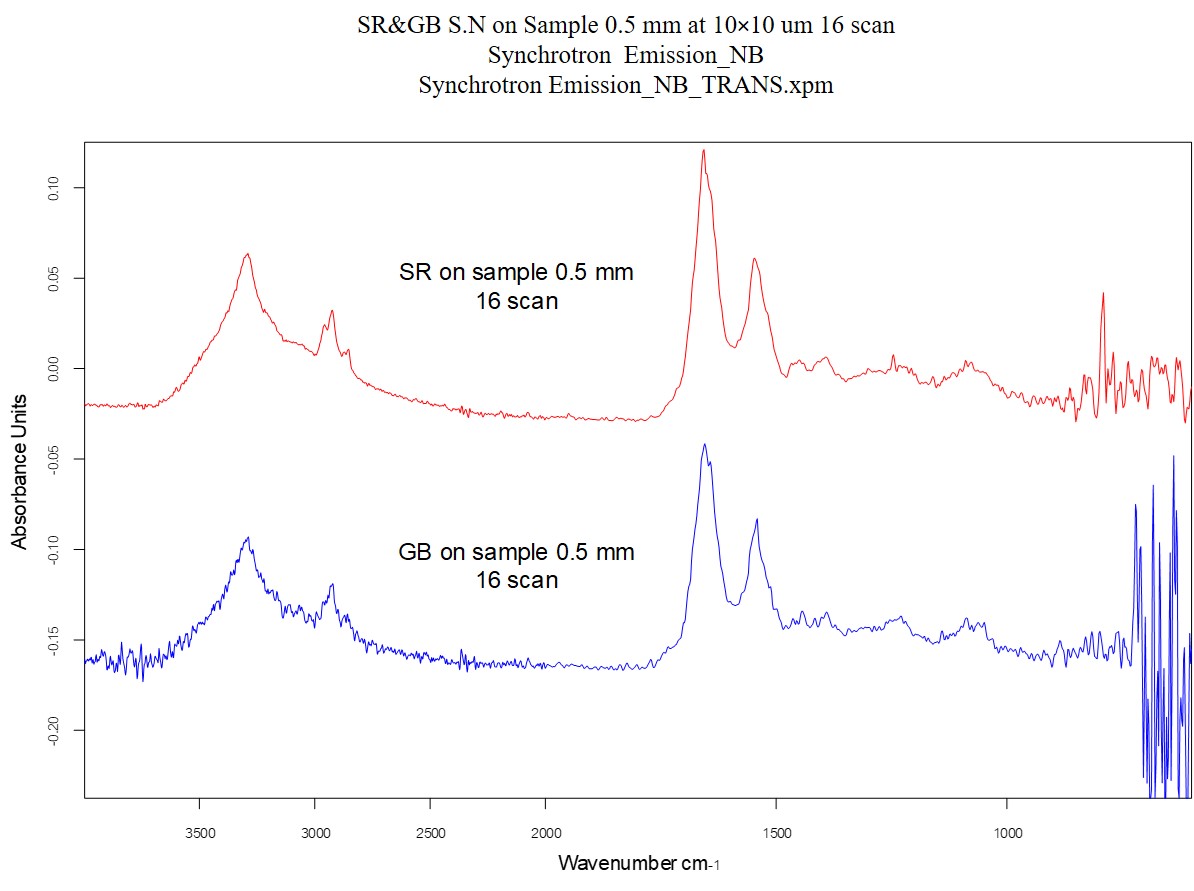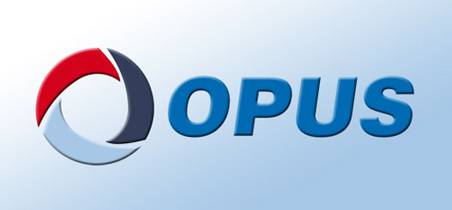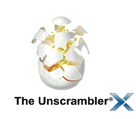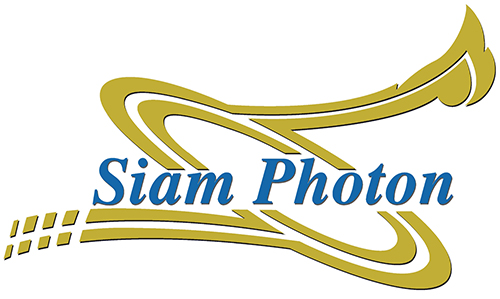BL4.1
|
Description |
|
Infrared microspectroscopy is widely used for chemical compound identification. Thanks to the high brightness of synchrotron radiation, synchrotron based Infrared microspectroscopy provides high spatial resolution, better signal to noise ratio and shorter data acquisition time than the conventional source. BL 4.1 IR spectroscopy and Imaging is designed to extract the far- to mid- infrared light (spectral range between 4000-100 cm-1) from the 1.2 GeV Siam Photon Source. This beamline can be divided into 3 branches in order to provide 3 end-stations working simultaneously. |
| Technical specifications | |
| Photon Energy range | Between 0.01-0.5 eV |
| Wavelength | 2.5-100 microns |
| Source | Edge and Bending Magnet Radiation |
| Objective |
15X Schwarzschild Objective 36X Schwarzschild Objective 20X ATR Objective |
| Spectrometer/microscope | Vertex 70 spectrometer/Hyperion 2000 microscope |
| Polarization | Both linearly (bending magnet radiation) and radially polarized (edge radiation) |
| Beam size at sample | 10X10 µm2 (diffraction limited) |
| Detector | 100 micron Narrow band MCT |
| Mode of measurement |
Reflection Transmission Attenuated Total Reflectance (ATR) |
Signal-to-Noise Comparison
Infrared spectra on sample collected with 10x10 µm square aperture, the brightness advantage of the synchrotron has significantly improved the signal-to-noise ratio.

Equipments
- Spectrometer: Vertex 70 spectrometer
- Microscope: Hyperion 2000 microscope
- Detector: 100 micron narrow band MCT detector
Objectives:
- 36X Schwarzschild Objective
| Available technique | Research field |
| 36X objective of Transmission |
Biomedical science Food and Agricultural science Polymer science |
| 36X objective of Reflection |
Biomedical science Food and Agricultural science Polymer science |
| 36X objective of Transmission & Diamond avil cells |
Contamination Material science |
| 36X objective of Transmission & Vis polarized |
Biomedical science Material science |
| ATR 20X |
Biomedical science Environmental science Polymer science |

| Sample preparation and requirement |
SR-FTIR Sample Techniques - transmission
Excellent quality spectra can be obtained for many types of samples using transmission mode of experiment. The transmission technique can be used combine with 36X microscopes to analyze:
What types of samples can you analyze?
Biological sample/Tissue
The transmission mode requires for the spectra acquisition and careful preparation of the samples. For biological samples, cross section is usually recommended. The sample will be embedded in paraffin or OCT (optimum cutting temperature) then microtome or cryostat into thin cross section (Tissue cross section should not more than 7 micron). The sample will be put on window and placed in a desiccator loaded with silica gel for at least 24 hours before analysis. However, paraffin has most intense absorbance features from CH stretching vibration (3000-2800 cm-1) and CH2, CH3 bending (1460 and 1380 cm-1). Therefore, it was usual to remove paraffin from the sample by washing of xylene before FTIR analysis.
Before coming, it is importantly recommended to test the samples with SR-FTIR microspectroscopy. This can enable to check the sample is thickness enough or user can prepare of different thickness for testing.
Bacterial cell
Cell suspensions in media will be washed with normal saline (0.85%) to remove media then will be washed in sterile distilled water 2 times and then deposit into BaF2 window (1-2 µl/drop on window). The samples will be make a smooth layer of the sample in desiccated under vacuum for several hours and stored in desiccators to form films suitable before analysis.
| Using Remote Connection via VPN |
Using VPN, you can use software (Cytospec, OPUS and The UnscramblerX) to do the data analysis and control a computer from a different computer network.



- Please send your request to This email address is being protected from spambots. You need JavaScript enabled to view it.
| Beam time on this beamline/ How to apply for beam time |
|
If user interested in applying for beam time first step is contact the beamline scientist to discuss the experiment or user office group leader. The next step is to submit a proposal, register as new user or sign in using your username and password. The application for apply the beam time should be including main information following details: |
| Ø How the SR-FTIR experiment fit into your overall project. |
| Ø Explain the proposed experimental work giving information that will allow to establish the feasibility and outcomes. |
| Ø The detailed of sample information and preparation. |
| Ø The experimental design or spectrum acquisition parameters (For example: Spectral range, Number of scans and resolution) |
| Ø List the people who will participate in the experiments (1 shift = 8 hours, 3 shifts/day) Service |
|
User will get a small amount of beam time to test the feasibility of new samples. Proposal submission Click: http://beamapp.slri.or.th/ |
| BL 4.1 IR CONTACT |
E-mail: This email address is being protected from spambots. You need JavaScript enabled to view it.
Should you have any technical questions, please do not hesitate to contact us via e-mail or tel: ++66 44 217040 ext 1481
For further information about proposal submission, please contact SLRI User Office, useroffice or ++66 44 217040 ext 1602-1605
Useful link for infrared spectroscopy technique
Infrared beamlines around the world
- MirrIR slides: Reflection mode http://www.kevley.com/
- Properties of Select Infrared Transmitting Materials for Transmission Spectroscopy https://www.piketech.com/Crystal-Selection-for-Transmission-Sampling.html
- Handbook of Infrared and UV optical materials http://www.crystran.co.uk/handbook
Beamline around the world
SLRI | BL4.1IR |PUBLICATIONS | USEFUL LINKS
Updated: 26th July, 2024














